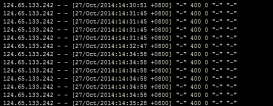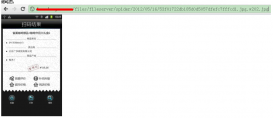在一个服务器上部署多个站点,需要开放多个端口来访问不同的站点,流程很简单,调试花了2小时,记录一下:
主域名多端口访问
在DNS NameServer设置A记录
将 www.xxx.com 指向服务器ip
开放所需端口,修改nginx配置文件
比如我们有两个服务分别开放在80端口和8080端口
如果有iptable,先开放端口:
|
1
2
|
iptables -A INPUT -ptcp --dport 80 -j ACCEPTiptables -A INPUT -ptcp --dport 8080 -j ACCEPT |
修改配置文件:
|
1
2
3
4
5
6
7
8
9
10
11
12
13
14
15
16
17
18
19
20
21
22
23
24
25
26
27
28
29
30
31
32
33
34
35
36
37
38
39
40
41
42
43
44
45
46
47
48
|
#path: /usr/local/nginx/conf/nginx.confserver {listen 80;server_name www.xxx.com;access_log /data/www/log/33.33.33.33_nginx.log combined;index index.html index.htm index.php;include /usr/local/nginx/conf/rewrite/none.conf;root /data/www/website/33.33.33.33:80;location ~ [^/]\.php(/|$) { fastcgi_pass unix:/dev/shm/php-cgi.sock; fastcgi_index index.php; include fastcgi.conf; }location ~ .*\.(gif|jpg|jpeg|png|bmp|swf|flv|ico)$ { expires 30d; access_log off; }location ~ .*\.(js|css)?$ { expires 7d; access_log off; }}server {listen 8080;server_name A.xxx.com;access_log /data/www/log/33.33.33.33:8080_nginx.log combined;index index.html index.htm index.php;include /usr/local/nginx/conf/rewrite/none.conf;root /data/www/website/33.33.33.33:8080;location ~ [^/]\.php(/|$) { fastcgi_pass unix:/dev/shm/php-cgi.sock; fastcgi_index index.php; include fastcgi.conf; }location ~ .*\.(gif|jpg|jpeg|png|bmp|swf|flv|ico)$ { expires 30d; access_log off; }location ~ .*\.(js|css)?$ { expires 7d; access_log off; }} |
关键就是两个 server 段配置,你也可以把这两段拆成两个配置文件,放到
|
1
|
/etc/nginx/conf.d/ |
目录下面;
子域名多端口访问
这种访问比较傻,因为你的8080端口的访问需要 http://xxx.com:8080 这样的格式;
而且如果有两个不同的cgi,比如80端口对应一个php web服务, 8080端口对应一个nodejs web服务;而我们的nodejs自带web服务,已经在8080端口监听了,这怎么办?
这个时候我们需要Nginx的反向代理功能,并在DNS Server上面增加一条A记录,最终实现
- www.xxx.com 访问80端口
- A.xxx.com 通过nginx转发访问8080端口服务
增加一条A记录
将 A.xxx.com 指向服务器ip
Nginx配置模板如下:
|
1
2
3
4
5
6
7
8
9
10
11
12
13
14
15
16
17
18
19
20
21
22
23
24
25
26
27
28
29
30
31
32
33
34
35
36
37
38
39
40
41
42
43
44
45
46
47
48
|
#path: /usr/local/nginx/conf/nginx.confserver { listen 80; server_name www.xxx.com; access_log /data/www/log/33.33.33.33_nginx.log combined; index index.html index.htm index.php; include /usr/local/nginx/conf/rewrite/none.conf; root /data/www/website/33.33.33.33:80; location ~ [^/]\.php(/|$) { fastcgi_pass unix:/dev/shm/php-cgi.sock; fastcgi_index index.php; include fastcgi.conf; } location ~ .*\.(gif|jpg|jpeg|png|bmp|swf|flv|ico)$ { expires 30d; access_log off; } location ~ .*\.(js|css)?$ { expires 7d; access_log off; }}server { listen 80; listen [::]:80; server_name A.XXX.com; proxy_connect_timeout 300s; proxy_send_timeout 300s; proxy_read_timeout 300s; fastcgi_send_timeout 300s; fastcgi_read_timeout 300s; location / { proxy_pass http://127.0.0.1:3000; proxy_http_version 1.1; proxy_set_header Upgrade $http_upgrade; proxy_set_header Connection 'upgrade'; proxy_set_header Host $host; proxy_cache_bypass $http_upgrade; try_files $uri $uri/ =404; }} |
nginx重新载入配置文件
|
1
|
nginx -s reload |
以上就是本文的全部内容,希望对大家的学习有所帮助,也希望大家多多支持服务器之家。
原文链接:https://happy123.me/blog/2019/11/18/nginxpei-zhi-duo-duan-kou-duo-yu-ming-fang-wen/

















